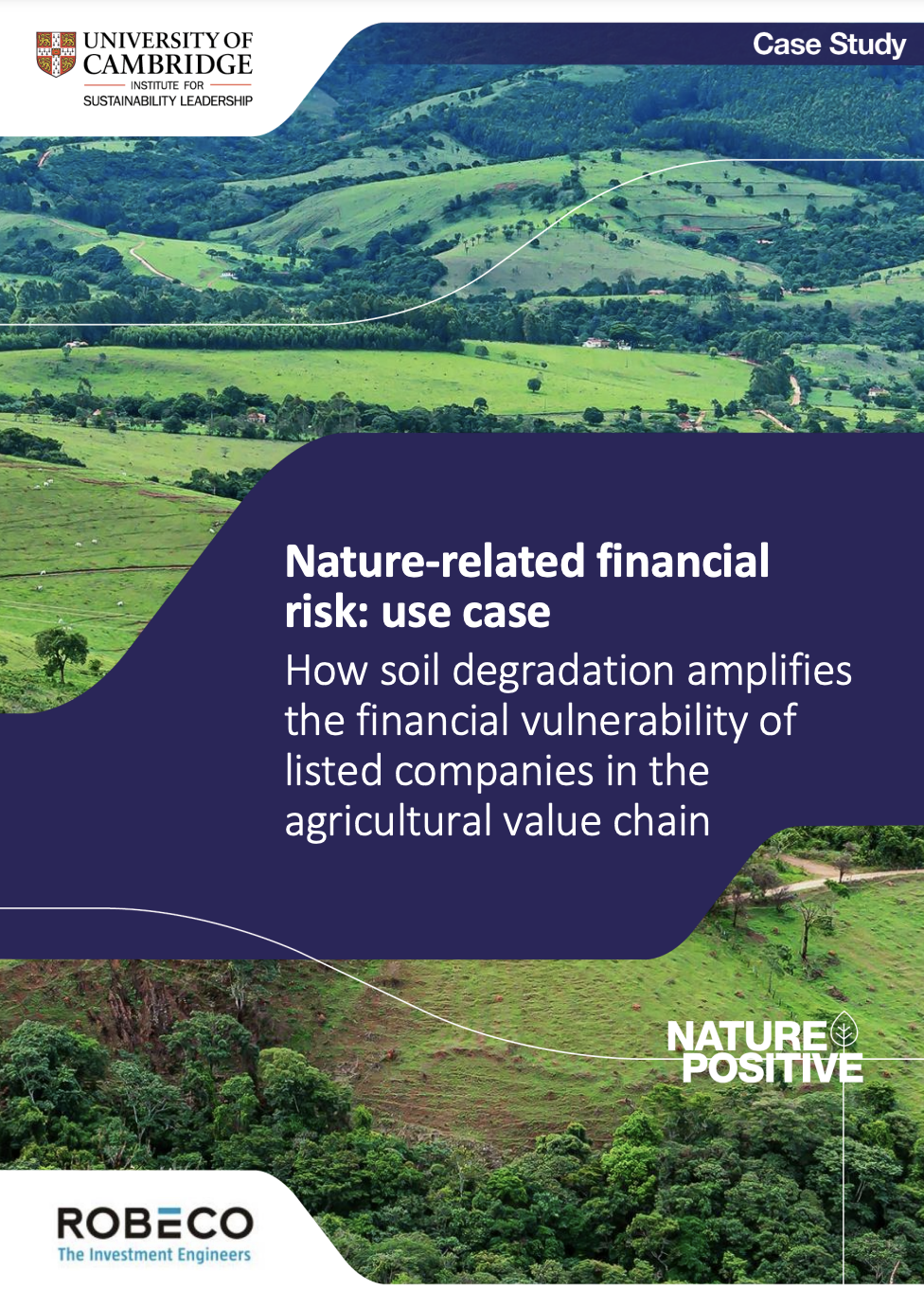How soil degradation amplifies the financial vulnerability of listed companies in the agricultural value chain
How soil degradation amplifies the financial vulnerability of listed companies in the agricultural value chain
27 January: If nature is not protected, at least USD 10 trillion of GDP will be lost by 2050 due to the decline of ecosystem services. By identifying and assessing nature-related financial risks, nature can be integrated into financial decision making, recognising nature as the heart of the economy and remaking the relationship between people and the planet.
CISL and financial institutions have been conducting assessments of nature-risks. Using the Handbook for Nature-related Financial Risks (CISL, 2021), members from the Banking Environment Initiative and Investment Leaders Group are assessing the risks posed to specific sectors and geographies by degraded land, water curtailment and the EU Farm to Fork Strategy. To complement this analysis, the institutions are also mapping nature-risks in different share indices.
In this use case, Robeco quantified the financial risk of land degradation to the agricultural value chain, quantifying valuation impact.
Following an extreme weather event those along the value chain connected to degrading land saw a materially negative impact on valuation:
- Farmers operating predominantly on degrading land saw their market value decline by 13 per cent
- Small packaged food companies that source from areas of degrading land saw a negative impact on valuation as high as 45 per cent.
- The smaller and less diversified a company, and the more connected to degrading land, the worse the valuation impact.
The analysis showcased the financial materiality of land degradation, underscoring the need for investors to incorporate factors like soil health into investment decisions. It also highlighted the need to actively engage with companies in the agribusiness sector to guide them to tackle nature-related risks in their business strategies.
Key points of upcoming use cases
With use cases ongoing and more due to be published, CISL published a preview of use cases in October 2021 containing the following key points:
- data exists today to assess some nature-related financial risks
- tools are available to map financial portfolio exposure to nature-related risks
- some responses to nature loss (transition risks) can be modelled today with limited specialist guidance
- first assessments of nature risk promote engagement within financial institutions and between financiers and companies
- the current lack of supply chain transparency is a key barrier to assessing the scale of risks.
Authors
Publisher
Cambridge Institute for Sustainability Leadership
Published January 27, 2022
